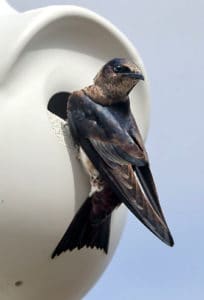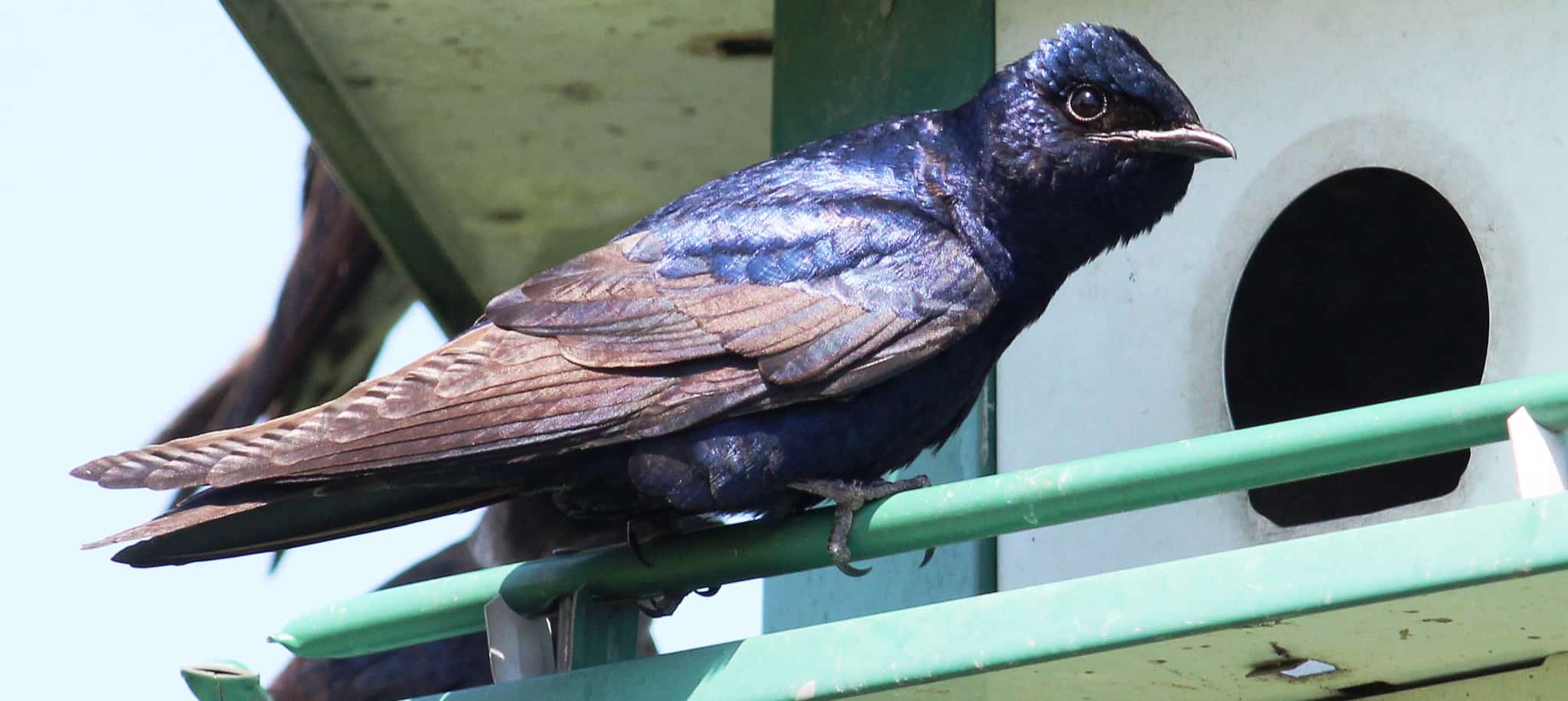Share this article
WSB: Do purple martins face a housing crisis?
The purple martin (Progne subis) is in the midst of a long-term decline, and researchers worry that without humans continuing to put out birdhouses for them, their numbers will fall faster.
In a study published in the Wildlife Society Bulletin, researchers found that eastern purple martins (P.s. subis) have very high nest survival in artificial housing, making it an important component in the bird’s conservation.
“If people are interested in helping out a species, this is a really easy solution,” said Texas Tech assistant professor Blake Grisham and an author on the study.
In the centuries since European settlement in North America, eastern purple martins have become almost completely dependent on artificial housing, from gourds suspended from tree branches to deluxe high-rises with pitched roofs and balcony perches.
The shift began even before colonization, Grisham said, with martins nesting in gourds placed by Native Americans. Since then, with the exception of a Florida population that still nests in the wild, the birds rely exclusively on birdhouses, Grisham said, and that could present a problem.
“Most of the individuals who have purple martin cavities are greater than 56 years old,” he said. “What happens if they stop providing those cavities?”

Researchers found high nest survival for eastern purple martins in birdhouses, with slightly larger clutch sizes and fledgling numbers in gourds designed to keep out starlings. ©Danny Hancock
A native of northeast Arkansas, Grisham grew up seeing purple martins. At Texas Tech, he turned his population modeling class into a research project, replacing lectures and Power Point slides with almost two decades of data for his masters students to comb through.
“I told them, ‘You’re success will be judged on the final report,’” Grisham said. “‘Can you analyze this data and come up with some preliminary results?”
While still abundant, the birds have been gradually declining for decades. Since 1976, their population has fallen about 1.9 percent each year, and biologists aren’t sure why. Could they be exposed to threats in the Amazon, where they overwinter, or on their migration routes back and forth? Some regional populations are showing sharper declines than others, including Gulf Coast states where they appear to be most abundant.
Grisham wondered if they faced problems in their nest sites. Using a 19-year database of nest check records collected by Project MartinWatch, a citizen science program of the Purple Martin Conservation Association, he and his team compared nest ecology metrics and survival among housing and entrance hole types to see if they affected nest survival.
Studying 72,627 nests across eight regions in the United States and Canada monitored by citizen scientists, they found nest survival was more than 85 percent. Clutch sizes and fledgling numbers were slightly higher in gourds with entrances designed to keep out European starlings (Sturnus vulgaris).
The results suggest that martin houses can be an important conservation tool for the bird, Grisham said, but it means that younger generations will have to do their part.
“The real underlying appreciation for a pretty songbird with a really nice call that’s fun to watch is all the benefit you really need,” he said.
TWS members can log in to read this paper in the Wildlife Society Bulletin.
Header Image: Purple martins depend on artificial housing for nesting. ©Tom Benson








